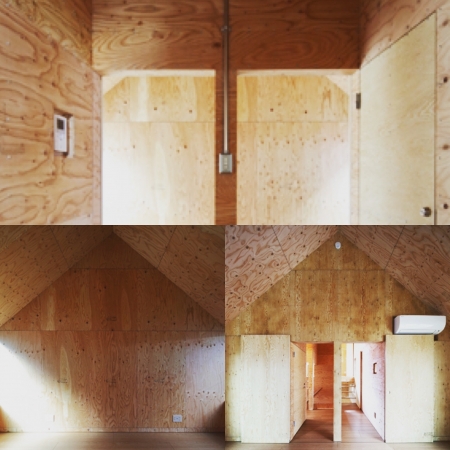動く人と動かない建築が並列
人と建築の距離を縮めるには建築の成り立ちから考える必要があり、容れ物では人は建築と距離を詰められない。人が建築と直に対峙するには、人が建築に包み込まれるのではなくて、人と建築が並列になり、人は動く物、建築は動かない物として関係性を築く。
建築を人から切り離して考えることもできるが、むしろその方が建築という物を直に考えやすいかもしれないが、動く人はやはり不確定要素に満ちているし、純粋に建築という構築物だけの方が美しい物ができるだろう。
人の動きに動かない建築が呼応し、動かない建築が人の動きを制御する。容れ物ではなく、包み込まれる訳でもないから、並列な人と建築は各々別々に成り立つと同時に相互依存でもある。自律と他律が同時に成り立つ様をまず言葉で考え、次にプランにする。
"Moving people and non-moving architecture are in parallel"
In order to shorten the distance between people and architecture, it is necessary to think from the origin of architecture, and people cannot close the distance from architecture with containers. In order for people to confront architecture directly, people are not wrapped in architecture, but people and architecture are parallel, and people build relationships as moving things and architecture as immovable things.
It is possible to think of architecture separately from people, but it may be easier to think of architecture directly, but moving people are still full of uncertainties, and those who are purely architecture. Will make beautiful things.
Architecture that does not move responds to the movement of people, and architecture that does not move controls the movement of people. Since it is neither a container nor an envelopment, parallel people and architecture are both independent and interdependent. First think in words how autonomy and heteronomy hold at the same time, and then make a plan.


